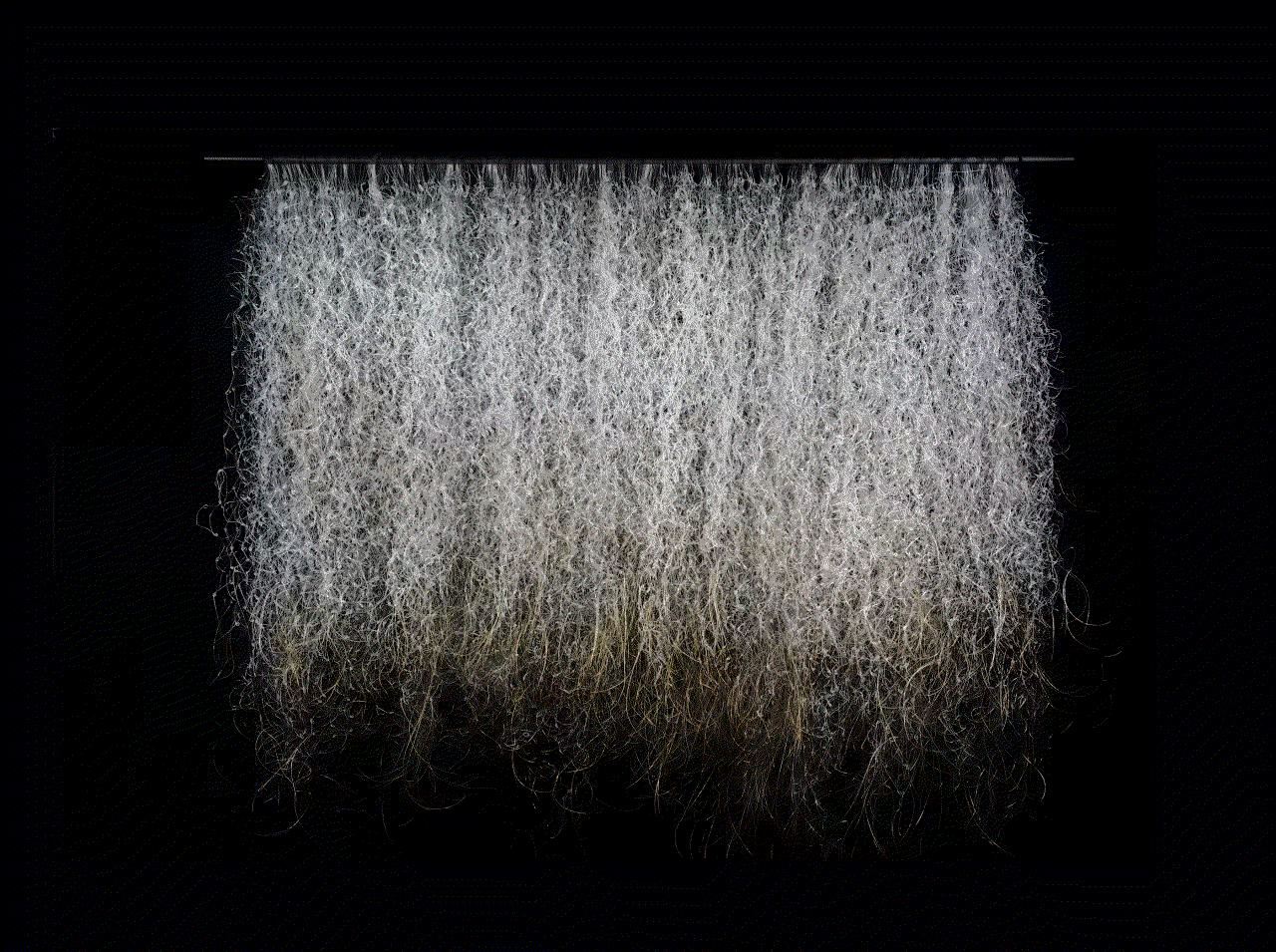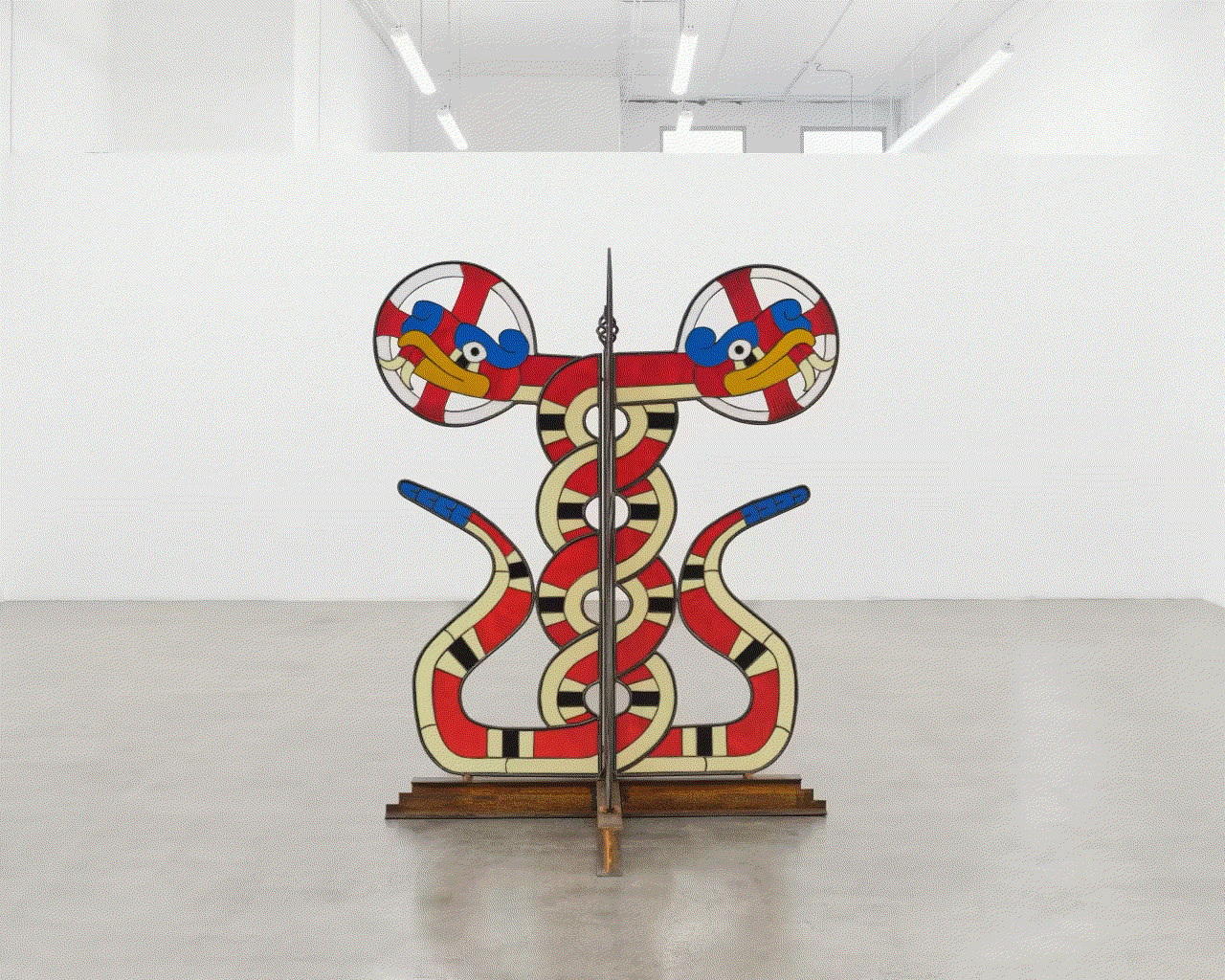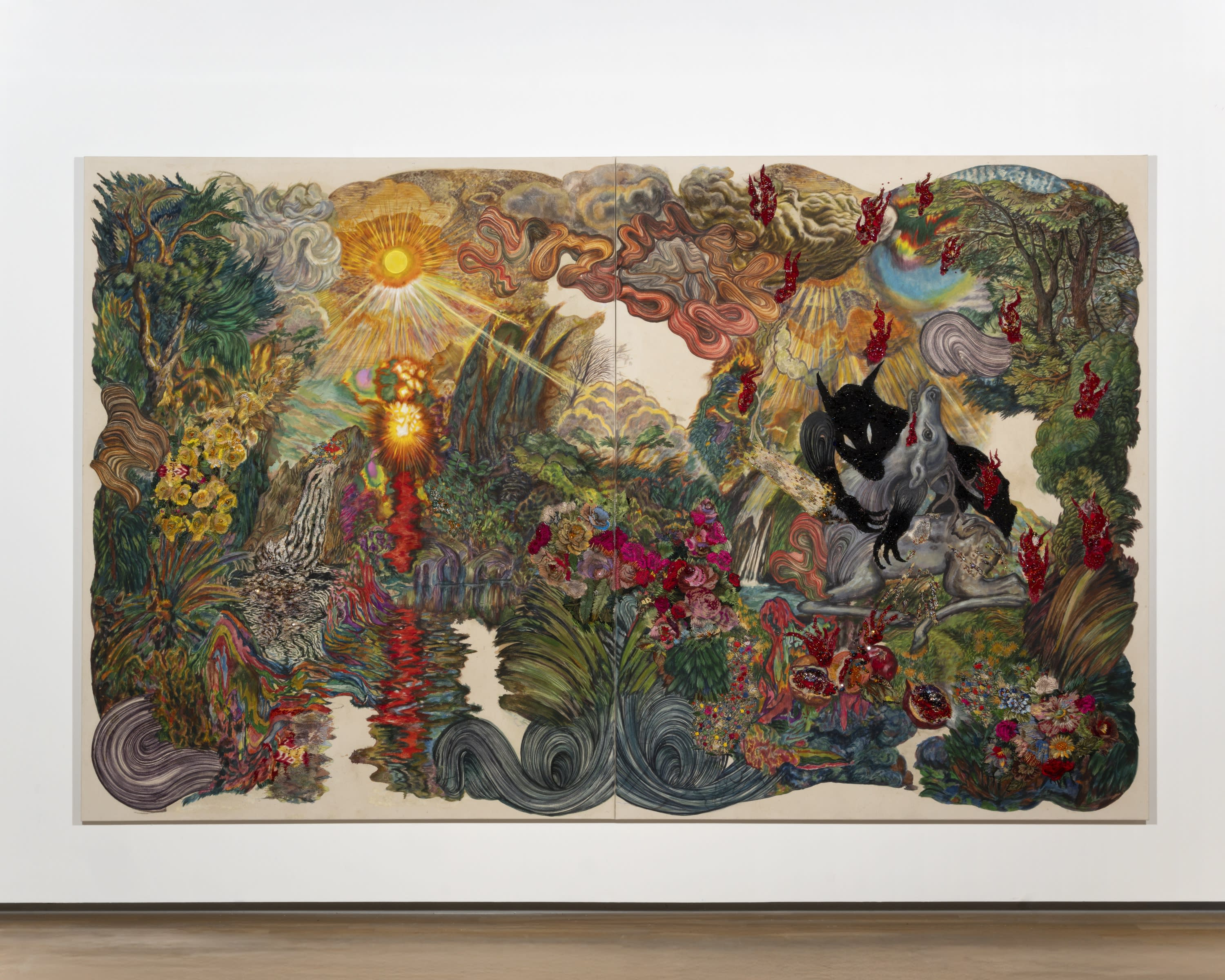
Highlights at the often-overwhelming art fair, with its nearly 300 exhibitors, came in presentations focusing on rising and lesser-known artists.
Miami Beach, Fla.
There’s an unwritten rule that if you want to get the freshest stuff at the grocery store you stick to the perimeter. The same guidelines apply to art fairs. Their organizers tend to group the brand-name galleries in the center of the shows, where larger displays and well-known artists dominate; around the edges, focused spaces and smaller exhibitors with early-career creators and more ambitious programs offer visitors more interesting fare.
That held true at this year’s edition of Art Basel Miami Beach. With nearly 300 exhibitors, ABMB maintains the tradition of mega fairs being too large—the feeling of attending is less one of a bountiful artistic feast than of being swallowed up by a grain silo; during my almost seven-hour visit I still felt rushed to see every booth. But among the surfeit there were still treasures to be discovered.
In the Survey section of the show, which stages presentations “highlighting artistic practices of historical relevance,” galleries refreshed the contemporary-art fair with works from the past. (A bit of a growing trend, it seems, as NADA, another Miami fair, also offered discoveries from earlier years, and Independent 20th Century, an annual New York event, is dedicated entirely to works from the previous century.)

Yvonne Pacanovsky Bobrowicz’s ‘Energy Field’ (1985). PHOTO: SAPAR CONTEMPORARY
The standout art here was all by women, all receiving overdue attention after working at times when the art world was still mainly a boys’ club. Yvonne Pacanovsky Bobrowicz (1928-2022), shown by Sapar, studied under Anni Albersand pushed textile art to new places in three-dimensional works that incorporated both natural and synthetic materials, painstakingly woven, colored, knotted and arranged into billowing pieces inspired by her interest in particle physics and Jungian philosophy. “Energy Field” (1985) seems to breathe as we walk around it, the light reflecting off and penetrating through the gold leaf and monofilament stands that make up most of the sculpture, shifting and reinventing the work with every step we take.
Bonnie Lucas (b. 1950), at ILY2, uses her own textile works to explore notions of traditional femininity. Some are swirling and alive with color, but more powerful are the smaller, quieter pieces that focus on domesticity. I found an untitled assemblage from 1978-79 that incorporates a toddler’s sock into its silky, cream surface particularly moving, an embrace of maternal womanhood that reinforces the beautiful delicacy of children.

timo fahler’s ‘twin serpents’ (2024). PHOTO: SEBASTIAN GLADSTONE LOS ANGELES
The paintings by Linda Kohen, who is celebrating her centenary this year, are stunning studies of the quotidian. Shown by Piero Atchugarry Gallery, these brilliantly composed, mysterious works reveal the importance of home to an artist who has repeatedly had to flee due to her Jewish faith—first from Italy and later Uruguay. A door ajar, an empty bed, an overflowing suitcase and more create tension in these works, their realist depictions occasionally cropped or framed so that their everyday subjects take on an almost abstract aura.
Elsewhere, in the Nova section, which spotlights recently created solo or small-group presentations, showstopping, outsize displays carried the day. Ken Gun Min’s folding screen and wall-size canvas at Nazarian / Curcio incorporate classical East Asian and Western imagery, rendered in European oil techniques with Korean pigments and embellished with hand-embroidered beads and gemstones, to probe the artist’s identity as a gay Asian man navigating life in Los Angeles and Seoul. The stoneware-relief mural by Nina Surel at Spinello is a fractured, multipanel scene celebrating the feminine, its topless figures drawing on Cubist and tribal aesthetics as well as Botticelli’s “Birth of Venus,” an Yves Klein blue bursting forth from rich terracotta surfaces. And the installation from Elena Alonso at Espacio Valverde/Fabian Lang presents a slick, highly polished collection of sculptural objects and paintings that blend futurism, Art Deco, geometric abstraction and postmodern architecture. That could be an unwieldy mix, but in Ms. Alonso’s hands everything remains balanced, like the precisely arranged plaster balls that line the walls of the booth.

 Ken Gun Min’s ‘The vastness is bearable only through love (homage to Carl Sagan, Robert Chanler)’ (2024).
Ken Gun Min’s ‘The vastness is bearable only through love (homage to Carl Sagan, Robert Chanler)’ (2024).